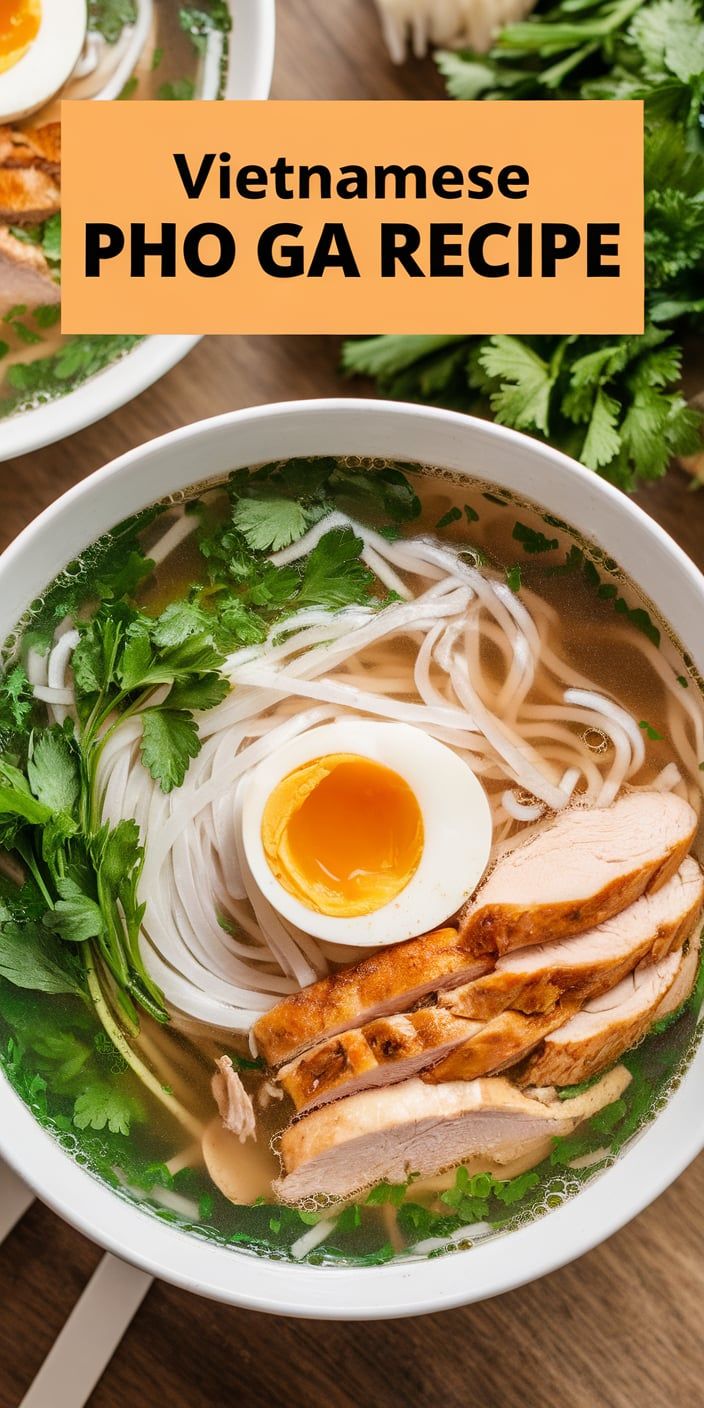Vietnamese Pho Ga represents a culinary masterpiece that transforms simple ingredients into an extraordinary chicken noodle soup. This traditional Vietnamese dish captures the essence of comfort and flavor, offering home cooks a delightful opportunity to explore authentic cuisine through a homemade Pho Ga experience.
Originating from Vietnam’s rich culinary traditions, this chicken noodle soup stands out with its aromatic broth, tender chicken, and vibrant herbs. Each spoonful tells a story of generations of cooking expertise, inviting food enthusiasts to create a truly memorable meal in their own kitchens.
The magic of Vietnamese Pho Ga lies in its delicate balance of ingredients and techniques that elevate a simple soup into a gastronomic journey. From carefully simmered broth to perfectly cooked rice noodles, this recipe promises to transport your taste buds directly to the streets of Hanoi.
Key Takeaways
- Authentic Vietnamese chicken noodle soup experience
- Rich, aromatic broth with complex flavor profiles
- Simple ingredients create an extraordinary dish
- Perfect for home cooks seeking traditional recipes
- Nutritious and comforting meal option

What Makes Vietnamese Pho Ga Special
Vietnamese Pho Ga represents more than just a traditional Vietnamese soup. It’s a culinary journey that captures the essence of Vietnamese cuisine, blending rich flavors, nutritional benefits, and cultural heritage into a single comforting bowl.
Roots of a Culinary Treasure
The Pho Ga history stretches back generations in Vietnam, originating as a street food that quickly became a national favorite. This traditional Vietnamese soup emerged in the early 20th century, combining French culinary influences with local Vietnamese cooking techniques.
- Developed in Northern Vietnam
- Spread across different regions with unique local variations
- Became a global comfort food in recent decades
Essential Pho Ga Ingredients
The magic of Pho Ga lies in its carefully selected ingredients. Each component contributes to the soup’s complex flavor profile and nutritional value.
- Chicken: Lean protein source
- Rice noodles: Gluten-free base
- Aromatic herbs: Cilantro, basil, mint
- Spices: Star anise, cinnamon, cloves
Nutritional Powerhouse
Beyond its delicious taste, Pho Ga offers remarkable health benefits. The nutritional benefits include high-quality protein, essential minerals, and immune-boosting properties.
“Pho Ga is not just a meal, it’s a healing bowl of comfort” – Vietnamese Culinary Experts
Vietnamese Pho Ga Recipe: Step-by-Step Cooking Guide
Mastering the art of Pho Ga requires precision and passion. This authentic chicken pho recipe will guide you through creating a delicious Vietnamese classic right in your kitchen.
- 1 whole chicken (3-4 pounds)
- 2 pounds rice noodles
- 2 onions, charred
- 4-inch piece of ginger, roasted
- Spices: star anise, cinnamon stick, cloves
- Fresh herbs: cilantro, Thai basil, mint
- Garnishes: bean sprouts, lime wedges
When learning how to make Pho Ga, the broth is everything. Start by preparing your chicken stock with these chicken pho instructions:
- Char onions and ginger over an open flame for deep flavor
- Place whole chicken in a large pot with water
- Add charred aromatics and spices
- Simmer gently for 45-60 minutes
- Remove chicken, let cool, and shred meat
Pro tip: Skim foam from the broth to ensure a clear, clean-tasting stock.
To assemble your Pho Ga, layer rice noodles in a bowl, top with shredded chicken, and ladle the hot, aromatic broth over the top. Garnish with fresh herbs and serve immediately for an authentic Vietnamese dining experience.
Conclusion
Mastering Pho Ga is more than just preparing a meal—it’s about connecting with Vietnamese cuisine at home. This aromatic chicken noodle soup represents a culinary adventure that transforms simple ingredients into a truly spectacular dish. Your journey through creating homemade Pho Ga allows you to explore traditional cooking techniques while developing a deeper appreciation for Vietnamese gastronomy.
Learning to craft authentic Pho Ga requires patience and practice. Each attempt brings you closer to perfecting the delicate balance of flavors and textures. Don’t be discouraged if your first batch isn’t restaurant-quality—every great chef started somewhere. Experimenting with spice levels, adjusting broth clarity, and personalizing your recipe will help you develop confidence in preparing this beloved national dish.
The beauty of Vietnamese cuisine lies in its ability to create complex flavors through straightforward methods. Your homemade Pho Ga represents more than just a meal; it’s a celebration of culinary tradition passed down through generations. By dedicating time to understanding ingredients and techniques, you’re not just cooking—you’re preserving and honoring a rich cultural heritage.
Ready to embark on your Pho Ga adventure? Roll up your sleeves, gather your ingredients, and let your kitchen become a gateway to exploring Vietnamese culinary traditions. Remember, cooking is an art form that improves with passion, practice, and an open mind.
